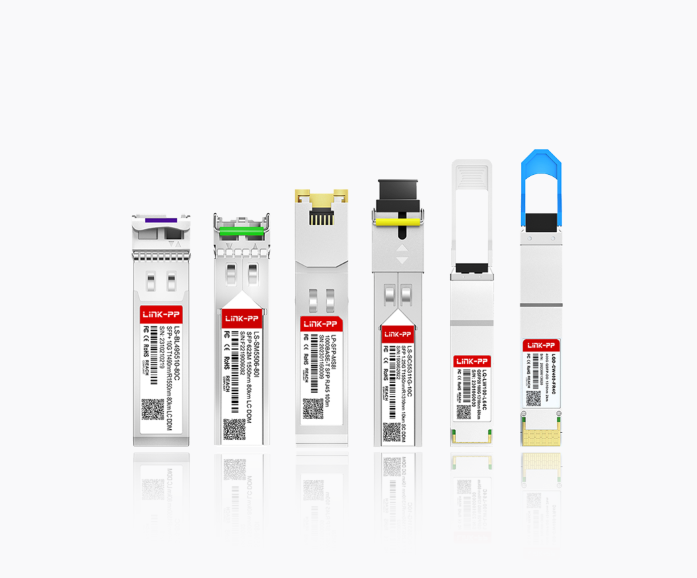
100G coherent DWDM technology represents a breakthrough in optical communication. It combines advanced techniques like coherent detection and digital signal processing to improve data transmission over optical fibers. This technology enhances spectral efficiency, enabling more data to travel through a single fiber. It also extends optical reach, minimizing the need for intermediate conversions. Its compatibility with flex-grid technology supports diverse bandwidth requirements. By addressing growing bandwidth demands in telecommunications and data centers, it ensures reliable and scalable network performance. The 100G Coherent DWDM Solution Overview highlights its role in meeting modern connectivity needs.
Key Takeaways
100G coherent DWDM technology improves data transfer using advanced tools. It allows faster speeds and better signal quality.
This technology works well for long distances by reducing signal problems. It is great for telecom and data centers.
A big advantage is sending more data on the same fibers. This helps handle the growing need for internet speed.
The flexible design of 100G systems lets networks adjust easily. They can grow without needing big changes to equipment.
It works with new tech like AI and machine learning. This will make networks better and ready for future high-speed needs.
100G Coherent DWDM Solution Overview

Coherent Detection
Role of phase and amplitude in signal processing
Coherent detection plays a vital role in modern optical communication systems. It processes both the phase and amplitude of light waves, enabling the extraction of more information from transmitted signals. This method allows for the precise reconstruction of data, even in the presence of noise or distortions. A study highlights that balanced coherent detection improves the signal-to-noise ratio (SNR) by 5 dB compared to traditional single-detector setups. Additionally, it achieves a frequency resolution of less than 0.1 MHz, showcasing its ability to enhance signal clarity and accuracy.
Advantages over traditional detection methods
Traditional detection methods rely solely on the intensity of light, limiting their ability to handle complex modulation formats. Coherent detection, however, supports advanced modulation schemes like QPSK and 16-QAM, which increase data capacity. It also enables long-distance transmission by compensating for signal impairments. Many industries, including banking and cloud services, have adopted this technology to improve performance and reliability in their networks.
Digital Signal Processing (DSP)
How DSP enables error correction and dispersion handling
Digital Signal Processing (DSP) is essential for managing transmission impairments in 100G coherent systems. It uses algorithms to counter chromatic dispersion and polarization mode dispersion, ensuring signal integrity. DSP also reconstructs received signals by correcting errors, which enhances the reliability of optical networks. These capabilities allow for longer transmission distances without compromising data quality.
Impact of DSP on signal quality and transmission distance
DSP significantly improves signal quality by compensating for distortions caused during transmission. It employs adaptive equalization techniques to maintain data fidelity. This technology extends the reach of coherent signals, making it ideal for long-haul and metro networks. By addressing these challenges, DSP ensures that 100G coherent DWDM systems deliver consistent performance across vast distances.
Dense Wavelength Division Multiplexing (DWDM)
Overview of DWDM technology
DWDM technology enables the transmission of multiple data streams over a single optical fiber by using different wavelengths of light. This approach maximizes the use of available bandwidth, making it highly efficient for high-capacity networks. QSFP28 modules, commonly used in DWDM systems, support high data rates while being cost-effective and energy-efficient.
Integration of 100G coherent systems into DWDM networks
Integrating 100G coherent systems into DWDM networks enhances their scalability and efficiency. These systems work seamlessly with existing network architectures, reducing the need for extensive upgrades. Features like hot-swapping minimize downtime during maintenance. Additionally, the compatibility with flex-grid technology ensures that networks can adapt to future bandwidth demands.
Key Features and Benefits
High Data Rates
Achieving 100Gbps and beyond
100G coherent DWDM technology achieves data rates of 100 Gbps and higher by utilizing advanced modulation formats like DP-QPSK. This format is specifically designed for DWDM networks operating on a 50-GHz grid. Its efficiency has been recognized by the Optical Internetworking Forum (OIF), which recommends DP-QPSK for 100-Gbps line systems. This capability ensures that networks can handle the increasing demand for high-speed data transmission without compromising performance.
Importance of high-bandwidth applications
High data rates are essential for applications requiring significant bandwidth, such as video streaming, cloud computing, and online gaming. These applications rely on fast and reliable data transfer to deliver seamless user experiences. The 100G coherent DWDM solution overview highlights its ability to meet these demands, making it a critical component in modern telecommunications and data center networks.
Spectral Efficiency
Maximizing data transmission per unit of bandwidth
Spectral efficiency is a key advantage of 100G coherent DWDM systems. By employing M-QAM modulation formats, these systems can encode multiple bits per symbol, significantly increasing data rates. This approach allows networks to maximize data transmission within the available bandwidth, ensuring optimal use of resources.
Benefits for network scalability
The scalability of coherent DWDM technology is evident in its ability to upgrade networks from 10G or 40G to 100G without extensive infrastructure changes. For example:
The FS 100G Coherent DWDM Solution supports seamless upgrades, reducing costs and complexity.
M-QAM modulation enhances capacity and performance, enabling networks to scale efficiently.
This scalability ensures that networks remain future-proof, accommodating growing data demands with minimal disruption.
Dispersion Handling
Overcoming chromatic dispersion in optical fibers
Chromatic dispersion, a common issue in optical fibers, can distort signals over long distances. Dispersion-compensating fibers address this challenge by equalizing the dispersion of the outside plant fiber. Externally modulated transmitters also reduce pulse broadening, ensuring signal clarity during transmission.
Extending transmission distances
Dispersion handling techniques play a crucial role in extending transmission distances. Non-zero dispersion-shifted fibers shift the zero dispersion point outside the 1550-nm window, balancing performance and suppressing interference. These advancements enable 100G coherent DWDM systems to maintain high-capacity operations over long-haul networks, making them ideal for carrier transport and metro networks.
Adaptable Grid Structure
Enhancing network efficiency and flexibility
An adaptable grid structure plays a crucial role in modern optical networks. Unlike fixed-grid systems, it uses flexible grid technology to allocate bandwidth dynamically. This approach allows networks to optimize resource usage and accommodate varying channel sizes. For instance, flexible grids can support both narrowband and broadband channels, ensuring efficient use of available spectrum.
Advanced processing technologies, such as coherent detection and digital signal processing, further enhance network efficiency. These technologies improve signal quality and extend transmission distances, making networks more reliable. Additionally, software-defined networking (SDN) techniques enable self-optimizing network management. SDN adjusts network configurations in real-time to handle traffic changes effectively. This adaptability reduces latency and ensures consistent performance during peak usage periods.
The table below highlights key aspects of how adaptable grid structures enhance network efficiency:
Aspect | Description |
|---|---|
Spectral Efficiency | Flexible grid technology allows for more channels within a given bandwidth, enhancing capacity. |
Advanced Processing | Coherent processing technologies improve signal quality and transmission distance. |
Network Management | SDN techniques enable self-optimizing network management, adjusting to traffic changes efficiently. |
Cost Efficiency | Reduces operational expenses through optimal resource usage and decreased power dissipation. |
Supporting future bandwidth demands
Adaptable grid structures also prepare networks for future bandwidth requirements. As data consumption grows, traditional fixed-grid systems struggle to meet demand. Flexible grids, however, can allocate bandwidth based on specific needs. This capability ensures that networks remain scalable and future-proof.
Flex-grid technology supports varying bandwidths, making it compatible with emerging high-speed systems like 400G and 800G. By accommodating these advancements, adaptable grids help networks evolve without requiring significant infrastructure changes. This forward-thinking design ensures that optical networks can support innovations like 5G, IoT, and AI-driven applications.
Comparison with Non-Coherent Systems and Traditional DWDM
Non-Coherent Systems
Differences in detection methods
Non-coherent systems rely on simpler detection methods that only measure the intensity of light signals. These systems do not utilize phase or frequency information, which limits their ability to handle advanced modulation formats. Coherent systems, on the other hand, process both phase and amplitude, enabling them to extract more data from transmitted signals. This difference allows coherent systems to achieve higher sensitivity and better performance in noisy environments.
Limitations in data rates and transmission distance
Non-coherent systems face significant limitations in both data rates and transmission distance. These systems struggle with complex modulation schemes, which restrict their spectral efficiency. In contrast, coherent systems excel in this area due to their ability to compensate for channel impairments and fading signals. Key limitations of non-coherent systems include:
Simpler demodulation methods that lose information.
Inferior performance in fading channels.
Lower spectral efficiency, resulting in reduced data rates.
Coherent systems overcome these challenges by leveraging advanced technologies like digital signal processing and coherent detection. This makes them ideal for high-capacity networks requiring long-distance transmission.
Traditional DWDM
Evolution from traditional DWDM to coherent systems
Traditional DWDM systems primarily used On-Off Keying (OOK) modulation, which limited their capacity and efficiency. The introduction of coherent DWDM systems marked a significant evolution in optical communication. These systems adopted advanced modulation techniques, such as QPSK and 16-QAM, to increase data rates and spectral efficiency. Flexible grid technology further enhanced their scalability, allowing networks to adapt to growing bandwidth demands.
Advantages in scalability and efficiency
Coherent DWDM systems offer several advantages over traditional systems. They provide a tenfold increase in capacity scaling, enabling networks to handle higher data volumes. Flexible channel spacing optimizes bandwidth usage, while advanced modulation techniques improve performance. The table below highlights key differences between the two systems:
Feature | Traditional Systems | Coherent DWDM Systems |
|---|---|---|
Capacity Scaling | Limited | 10X increase |
Modulation Techniques | OOK | Advanced modulation |
Channel Spacing | Fixed | Flexible |
Network Design Complexity | Higher | Similar to 10-Gbps OOK |
These advancements make coherent DWDM systems a cornerstone of modern optical networks. Their ability to integrate seamlessly into existing infrastructures ensures that networks remain future-proof. The 100G Coherent DWDM Solution Overview demonstrates how these systems address the growing demand for high-speed, reliable communication.
Applications of 100G Coherent DWDM Technology

Carrier Transport Networks
Role in long-haul and metro networks
100G coherent DWDM technology plays a critical role in carrier transport networks. It supports long-haul and metro applications by enabling high-capacity data transmission over extended distances. The technology ensures reliable performance even in challenging environments, such as those with high levels of chromatic dispersion. Its advanced modulation formats and digital signal processing capabilities allow carriers to maintain signal integrity across vast geographical areas. This makes it an ideal solution for connecting cities, regions, and countries.
Benefits for telecom providers
Telecom providers benefit significantly from 100G coherent DWDM systems. These systems enhance bandwidth, improve spectral efficiency, and ensure compatibility with existing infrastructure. The table below highlights key features that make this technology indispensable for telecom operators:
Feature | Description |
|---|---|
Bandwidth Enhancement | Enables operators to deploy line rates up to 400G per carrier across longer distances. |
Spectral Efficiency Improvement | Supports high-capacity, long-distance 100G optical transmission with improved spectral efficiency. |
Infrastructure Compatibility | Facilitates seamless upgrades from 10G/40G to 100G networks without extensive infrastructure changes. |
Application Versatility | Suitable for metro, regional, and long-haul applications, particularly in bandwidth-intensive cloud applications. |
These benefits allow telecom providers to meet growing data demands while minimizing operational costs.
Data Centers
Enabling high-speed interconnects
Data centers rely on 100G coherent DWDM technology to establish high-speed interconnects between facilities. This technology supports rapid data transfer, ensuring seamless communication between servers. Its ability to handle large volumes of data makes it essential for maintaining the performance of modern data centers. By reducing latency and increasing throughput, it ensures efficient operations in cloud computing environments.
Supporting cloud computing and storage demands
Cloud computing and storage services require robust and scalable networks. 100G coherent DWDM systems address these needs by providing high-capacity links that can handle massive data flows. Their adaptability allows data centers to scale operations without significant infrastructure changes. This ensures that cloud providers can meet the demands of businesses and consumers alike.
Enterprise Networks
Use in large-scale corporate networks
Large enterprises use 100G coherent DWDM technology to connect multiple locations efficiently. It supports high-speed communication across corporate campuses and regional offices. Its advanced features ensure secure and reliable data transfer, which is critical for business operations.
Enhancing connectivity and performance
This technology enhances connectivity by enabling enterprises to integrate various applications seamlessly. It supports bandwidth-intensive tasks like video conferencing, data analytics, and real-time collaboration. By improving network performance, it helps businesses achieve operational efficiency and maintain a competitive edge.
Future Potential and Advancements
Emerging Technologies
Integration with AI and machine learning for network optimization
Artificial intelligence (AI) and machine learning (ML) are transforming network optimization in coherent systems. These technologies analyze vast amounts of data to predict traffic patterns and adjust network configurations in real time. By doing so, they enhance efficiency and reduce operational costs. For example, AI algorithms can identify underutilized wavelengths and reallocate them to high-demand areas, ensuring optimal resource usage.
Recent studies highlight the benefits of integrating AI with coherent optical technologies. Networks using these advancements experience a 50% increase in capacity and a 25% reduction in latency. These improvements are essential for meeting the demands of modern applications like video streaming and cloud computing. AI and ML also enable self-healing networks, which detect and resolve issues without human intervention. This capability ensures uninterrupted service and boosts reliability.
Development of higher-speed coherent systems (e.g., 400G, 800G)
The development of higher-speed coherent systems, such as 400G and 800G, represents the next leap in optical communication. These systems use advanced modulation formats and digital signal processing to achieve unprecedented data rates. They also support flexible grid technology, which maximizes spectral efficiency.
Higher-speed systems address the growing need for bandwidth in applications like 5G, IoT, and AI-driven analytics. For instance, 400G systems can transmit four times the data of 100G systems over the same fiber, making them ideal for high-capacity networks. As research progresses, 800G systems are expected to become the standard for long-haul and metro networks. These advancements ensure that optical networks remain scalable and future-proof.
Market Trends
Growing demand for high-capacity networks
The demand for high-capacity networks continues to rise due to the proliferation of data-intensive applications. Video streaming, online gaming, and remote work require faster and more reliable connections. Coherent DWDM technology meets these needs by delivering high data rates and extended transmission distances.
Telecom providers are upgrading their infrastructure to support 100G and beyond. This trend reflects the increasing reliance on digital services in everyday life. Businesses and consumers alike benefit from the enhanced performance and scalability of these networks.
Impact of 5G and IoT on optical communication
The rollout of 5G and the expansion of IoT devices are driving advancements in optical communication. These technologies generate massive amounts of data, which require efficient transmission solutions. Coherent DWDM systems provide the capacity and flexibility needed to handle this surge in traffic.
5G networks rely on low-latency connections to support applications like autonomous vehicles and smart cities. Similarly, IoT devices depend on seamless communication to function effectively. Coherent systems ensure that these technologies operate smoothly, paving the way for a connected future.
100G coherent DWDM technology revolutionizes optical communication with its high data rates, exceptional spectral efficiency, and adaptability. It surpasses non-coherent systems by maintaining signal quality over long distances and utilizing advanced modulation formats for efficient bandwidth usage. Unlike traditional DWDM, it offers scalability and flexibility for modern networks.
Coherent optical transceivers enhance data integrity in long-haul systems.
Advanced processing reduces chromatic and polarization-mode dispersion.
Maximized data throughput ensures efficient bandwidth utilization.
This transformative technology supports growing demands in telecommunications, data centers, and enterprise networks, paving the way for future advancements like 400G and 800G systems.
FAQ
What is the main advantage of 100G coherent DWDM technology over traditional systems?
100G coherent DWDM technology offers higher data rates and better spectral efficiency. It uses advanced modulation formats and digital signal processing to maintain signal quality over long distances. This makes it ideal for modern high-capacity networks.
How does coherent detection improve optical communication?
Coherent detection processes both the phase and amplitude of light signals. This allows it to extract more data and handle complex modulation formats. It also improves signal clarity and extends transmission distances, making it superior to traditional intensity-based detection methods.
Can 100G coherent DWDM systems integrate with existing networks?
Yes, 100G coherent DWDM systems integrate seamlessly with existing network infrastructures. They support upgrades from 10G or 40G systems without requiring major changes. This ensures cost-effective scalability and compatibility with current technologies.
Why is spectral efficiency important in optical networks?
Spectral efficiency maximizes data transmission within the available bandwidth. This reduces the need for additional fibers and optimizes resource usage. It also supports network scalability, enabling operators to meet growing data demands efficiently.
What industries benefit most from 100G coherent DWDM technology?
Telecommunications, data centers, and large enterprises benefit significantly. Telecom providers use it for long-haul and metro networks. Data centers rely on it for high-speed interconnects, while enterprises use it to enhance connectivity and performance across multiple locations.
See Also
Exploring Filter FWDM and Its Role in Optical Networks
A Look at LAN WDM Fundamentals for 2025
Comparing xPON WDM Solutions for FTTH and FTTB




